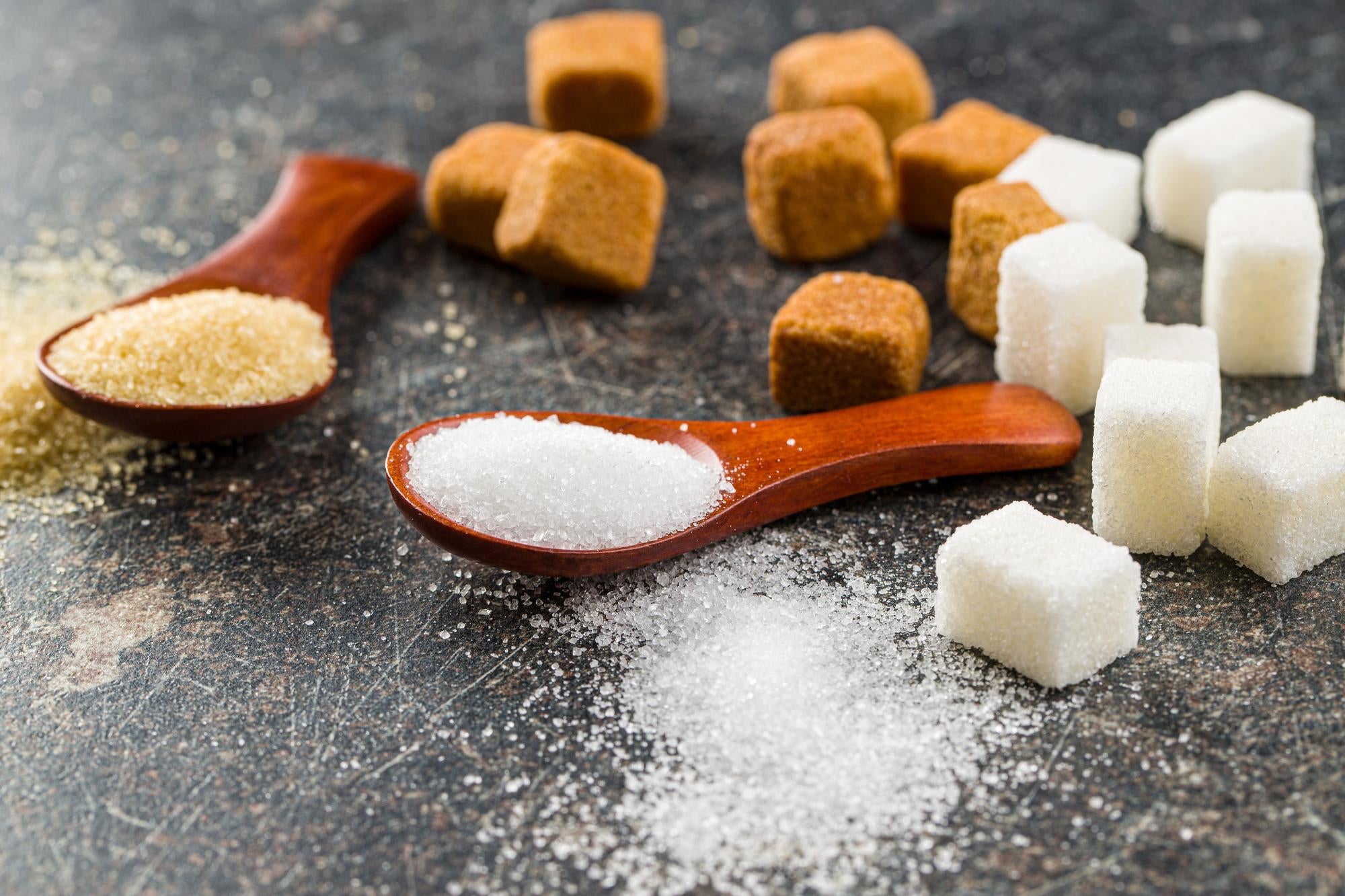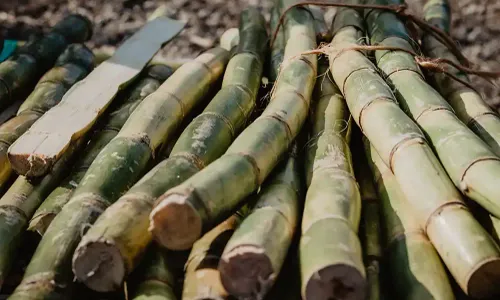Sugar beet vs sugar cane: Nutritional value explored
Introducing the Reality Behind Sugar Beet Vs Sugar Cane: Benefits, Uses, and Handling Techniques Clarified
The distinction between sugar beet and sugar cane is frequently overlooked in conversations about sugar production. Each crop provides distinct advantages and applications in different markets. Their growing methods and processing strategies likewise differ significantly. Recognizing these subtleties is important for stakeholders in the sugar sector. What implications do these differences have for health, flavor, and environmental influence? Discovering these facets can reveal deeper insights into the worldwide sugar market.

Introduction of Sugar Beet and Sugar Cane
Sugar beet and sugar cane are 2 key resources of sugar, each with distinctive qualities and growing techniques. Sugar beet, a root veggie, prospers in temperate climates and is normally collected in the loss. Its high sugar content, ranging from 15% to 20%, makes it a useful plant for sugar manufacturing. The process involves extracting juice from the beets, which is after that fine-tuned into granulated sugar.
In contrast, sugar cane is a tropical grass that thrives in warm, damp settings. It can attain a sugar web content of approximately 14%, yet its high, coarse stalks call for extensive processing. The cane is squashed to draw out juice, which goes through boiling and condensation to create sugar. Both sources contribute greatly to the global sugar supply, with sugar beet mainly cultivated in Europe and The United States And Canada, while sugar cane is primarily grown in Brazil, India, and various other tropical areas.
Growing Practices: Sugar Beet vs. Sugar Cane
Farming methods for sugar beet and sugar cane differ considerably because of their distinct expanding conditions. Sugar beetroots flourish in cooler climates with well-drained soil, while sugar cane prefers warmer temperature levels and plentiful wetness. Furthermore, the harvesting strategies employed for each and every crop show these environmental needs and affect total return and quality.
Expanding Conditions Comparison
While both sugar beet and sugar cane flourish in details environmental problems, their farming methods vary considerably. Sugar beet is primarily expanded in temperate regions, preferring cooler climates with well-drained dirt and moderate rainfall. It requires a growing period of regarding 90 to 120 days, with optimal temperature levels in between 15 ° C to 25 ° C. In contrast, sugar cane embellishments in exotic and subtropical environments, flourishing in cozy temperatures ranging from 20 ° C to 32 ° C. It calls for plentiful sunlight and constant rainfall, typically needing irrigation in drier locations. Sugar cane has a longer growing cycle, normally lasting 12 to 24 months. These differences in expanding conditions substantially influence the geographical distribution and agricultural methods related to each plant.
Gathering Strategies Distinctions
The harvesting methods for sugar beet and sugar cane show their distinct growth characteristics and farming techniques. Sugar beet is generally collected mechanically, with harvesters developed to root out the whole plant, making certain marginal soil disturbance. The beets are then carried for processing soon after harvest to maintain high quality. In comparison, sugar cane harvesting often includes a mix of handbook and mechanical techniques. Workers may originally cut the cane by hand, particularly in areas where automation is less viable. Ultimately, specialized equipment is utilized to gather and transfer the cut stalks to processing centers. These differing strategies not only influence effectiveness however additionally affect the quality and return of the final sugar products, showcasing the flexibility of each plant to its atmosphere.
Nutritional Comparison and Health Benefits
When contrasting the nutritional profiles of sugar beet and sugar cane, it comes to be clear that each offers distinct health benefits. Sugar beets are rich in essential nutrients like folate, manganese, and potassium, which contribute to overall wellness. They likewise include fiber, which aids digestion and may aid manage blood sugar level degrees. In addition, sugar beetroots are recognized for their antioxidant residential or commercial properties, which can battle oxidative stress.
On the other hand, sugar cane is largely composed of sucrose, providing fast energy. While it does not have the exact same degree of vitamins and minerals located in sugar beets, sugar cane does include percentages of B nutrients such as calcium and magnesium. Additionally, sugar cane juice is often promoted for its hydrating homes and possible health benefits, consisting of improved digestive system health. Ultimately, the choice between sugar beet and sugar cane might rely on specific wellness goals and nutritional choices.
Flavor Accounts and Culinary Utilizes
Flavor profiles of sugar beet and sugar cane differ markedly, influencing their culinary applications (Sugar beet vs sugar cane). Sugar cane, with its naturally sweet and complex flavor, is commonly preferred in beverages, desserts, and different cooking dishes. It lends a rich, caramel-like note that improves the preference of products such as syrups, molasses, and rum. In contrast, sugar beet has a much more neutral and much less fragrant taste, making it appropriate for applications where sweet taste is wanted without changing the dish's fundamental tastes. It is regularly utilized in processed foods, baked items, and sugar
Culinary professionals typically pick sugar cane for its deepness and splendor, especially my company in exquisite food preparation and craft beverages. Alternatively, sugar beet's convenience as a sugar in mass-produced products deals with a wider market. Ultimately, the selection in between these 2 sugars can considerably impact taste profiles and total culinary experiences.
Ecological Influence of Sugar Manufacturing
Sugar production, whether from sugar beet or sugar cane, brings substantial environmental effects. Sugar cane cultivation usually causes deforestation, especially in tropical areas, disrupting neighborhood ecosystems and adding to biodiversity loss. The comprehensive use fertilizers and chemicals in both sugar beet and sugar cane farming can lead to dirt destruction and water pollution, influencing surrounding habitats and areas. Furthermore, the high water consumption required for sugar cane watering poses a risk to regional water supplies, specifically in deserts.
On the other hand, sugar beet farming typically takes place in warm environments, which may minimize some logging problems. Nevertheless, it is not without its very own challenges, including dirt erosion and reliance on chemical inputs. Generally, the environmental effect of sugar manufacturing is multifaceted, demanding sustainable farming techniques and recognition of source monitoring to reduce damages to communities and promote ecological health.
Processing Methods: From Plant to Sugar
Various handling methods are employed to transform sugar beet and sugar cane right into granulated sugar, each method showing the unique characteristics of the source plant. For sugar beets, the procedure begins with washing and slicing the origins right into thin strips, which are then subjected to diffusion-- a technique where warm water extracts sugar from the beet slices. The resulting fluid is detoxified, concentrated, and crystallized.
On the other hand, sugar cane processing includes squashing the stalks to extract juice, complied with hop over to here by clarification to get rid of impurities. The juice is then evaporated, resulting in syrup that undertakes crystallization. Both processes are followed by separation of the sugar crystals from the molasses, which is a by-product. The final stages include drying out and packaging the granulated sugar for circulation. These strategies highlight the distinct pathways where these two plants yield sugar, each with its very own set of challenges and performances.
Financial Elements of Sugar Beet and Sugar Cane Industries
The financial landscape of the sugar beet and sugar cane sectors exposes noteworthy differences in production costs, market dynamics, and regional impacts. Sugar beet, primarily expanded in temperate environments, often sustains higher production expenses due to labor and input costs. On the other hand, sugar cane grows in exotic regions, usually benefiting from reduced labor prices and desirable climatic problems, which can lead to greater yields.
Market dynamics likewise vary, as sugar cane dominates international production, representing approximately 80% of sugar outcome. This prevalence influences rates structures and profession flows. On the other hand, sugar beet is a lot more regionally concentrated, particularly in Europe and The United States and Canada, affecting regional economies reliant on beet production.
Changes in worldwide sugar wikipedia reference prices can significantly affect both industries, influencing farmer earnings and financial investment degrees. Comprehending these financial facets is crucial for stakeholders aiming to browse the complexities of the sugar market successfully.

Regularly Asked Questions

Can Sugar Beet and Sugar Cane Be Intercropped Effectively?
Intercropping sugar beet and sugar cane presents obstacles due to varying development demands and ecological requirements. With cautious administration and appropriate problems, it may produce advantages such as improved soil health and wellness and source efficiency.

What Are the Historical Beginnings of Sugar Beet and Sugar Cane?
The historic origins of sugar beet trace back to 18th century Europe, while sugar cane has roots in Southeast Asia, cultivated for thousands of years. Both plants have substantially affected international sugar production and agriculture.
Just How Do Sugar Beet and Sugar Cane Affect Soil Wellness?
The effects of sugar beet and sugar cane on soil wellness vary. Sugar beet can enhance soil framework and nutrient content, while sugar cane may diminish nutrients if not taken care of effectively, influencing long-lasting soil fertility.
Exist Any Type Of Emerging Technologies in Sugar Manufacturing?
Arising innovations in sugar production consist of precision farming, progressed genetic modification for higher yields, and innovative extraction techniques. These improvements intend to enhance effectiveness, minimize environmental influence, and boost the overall sustainability of sugar production processes.
What Are the Secret Differences in Labor Demands for Both Plants?
The essential differences in labor needs for sugar beet and sugar cane lie in planting, harvesting, and handling. Sugar beet vs sugar cane. Sugar beet generally requires even more automation, while sugar cane frequently requires a lot more manual labor for collecting and refining stages